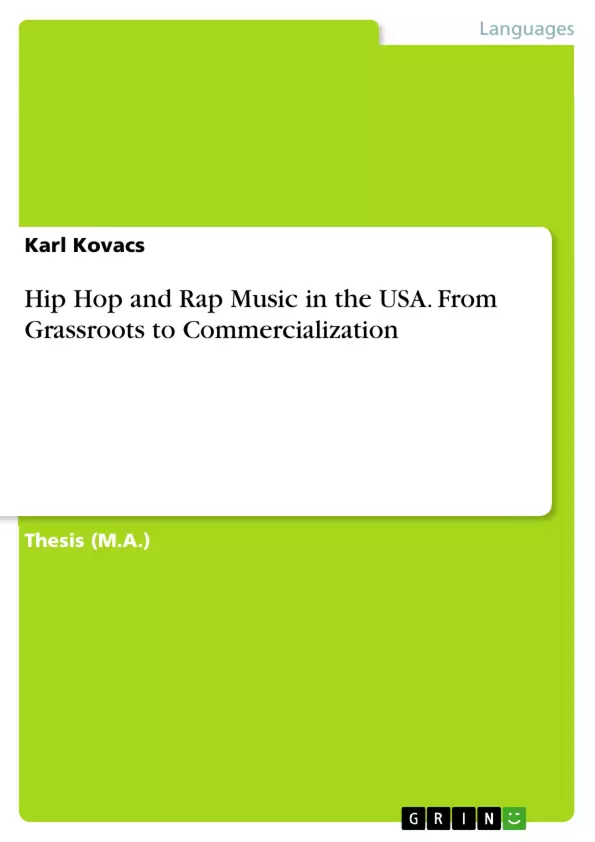In the past three decades hip hop has developed from an underground movement in one of New York City’s poorest boroughs, the Bronx, to a worldwide multi-billion-dollar industry.
Nowadays one could not imagine chart shows, discos or house-parties without rap music. According to Guthrie P. Ramsey, Jr., rap music, which belongs under the cultural umbrella called hip hop, “is virtually everywhere: television, radio, film, magazines, art galleries, and in ‘underground’ culture”
This work aims to examine the reasons for hip hop’s international success, the dangers of it, and the motivations rappers had and still have to pursue their art.
It is yet to be answered if the success of this form of art has been a blessing or a curse for its performers and their audience, the so-called hip hop generation.
- Citation du texte
- Karl Kovacs (Auteur), 2009, Hip Hop and Rap Music in the USA. From Grassroots to Commercialization, Munich, GRIN Verlag, https://www.grin.com/document/270059



